Te Ahi Kaa goes behind the scenes at Huria Marae in Tauranga as preparations get underway for their 59th Poukai (annual visit by the Māori King).
There’s a buzz going on in the kitchen at Huria Marae.
Bread is being picked apart for stuffing, a couple of dozen onions need to be diced - which means the sunglasses go on to avoid mass crying - sacks of mussels need to be shelled nicely, and families are just slotting in where they can to lighten the load.
'Many hands make light work' is indeed the mantra when catering for up to 500 people."
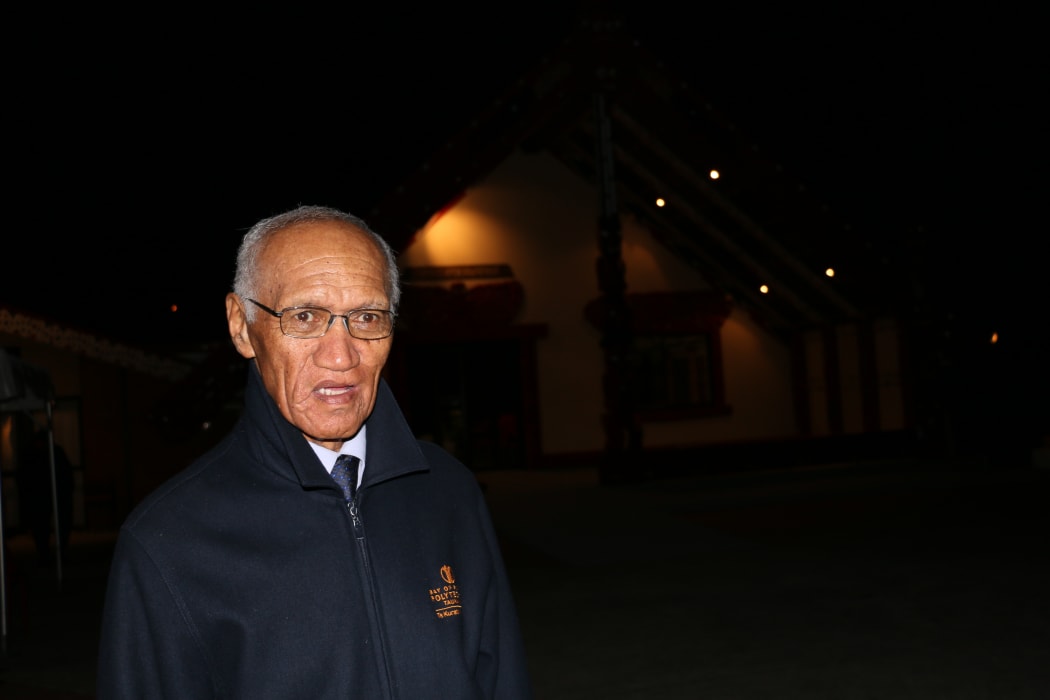
Tamati Tata says Maharaia Winiata was very close to Te Puea and at times, taught her English. Photo: RNZ/Justine Murray
But hapū Ngai Tamarawaho are used to this kind of workload, most juggling day jobs and families to give up their Friday night and a good part of their weekend to ensure things run well for the Poukai.
The history of Poukai at Huria is linked to the opening of the meeting house in the mid-1950s. The meeting house Tamateapokaiwhenua (formerly Te Kaponga) was opened in 1956 by Kingi Koroki, who had visited Tauranga several times.
It was during this time that a series of discussions were held about hosting Poukai. This notion was further strengthened through the relationship between Dr Maharaia Winiata (1912 – 1960) and Princess Te Puea Herangi (1883 – 1952).
Kaumatua Tamati Tata says Maha (as Maharaia Winiata was known) played a major role in bringing Poukai to Huria under the guidance of his elders.
“Maharaia Winiata was a mokai (pet) to Princess Te Puea, and because of that his association he would teach her how to korero Pākeha… along with Kingi Koroki. Both of them would come under the tutelage of Maharaia Winiata, who of course was a lecturer at Auckland University as well as Minister of the Wesleyan church and of course a citizen of Huria Marae.”
Dr Maharaia Winiata was born at Ngahina Pa, Ruatoki in 1912. Both of his parents were from Ngai Tamarāwaho. He grew up in Tauranga and possessed a natural flair for education and leadership. He was an athlete and head prefect at Tauranga Boys College, before enrolling at Auckland University in 1935. Two years later, he attended Methodist Theological College.
In 1942, Maharaia studied at Auckland Teachers Training College and taught at schools in the central North Island. During this period Maharaia’s achievements were many - he taught elders in the Waikato region to read through the establishment of Māori adult education courses and in 1945 he stood for parliament in the Western Māori seat.
In 1953, Maharaia received a scholarship and an education grant from Tainui Māori Trust Board to take up studies in Anthropology in Edinburgh. He completed his PhD Thesis about the changing roles of leadership in Māori society and was the first Māori to receive a Doctorate at an overseas college.
Tragically, Maharaia died in 1960 aged 47 years old at the close of the Poukai at Huria Marae. He was buried next to the meeting house Tamateapokaiwhenua.
Ina aro atu te oranga ki nga mea pai, ka rere te wairua, ka taea nga mea katoa.
When our lives and heart are attuned to good things, life is clear, the spirit flows freely. Everything is possible.
Dr Maharaia Winiata
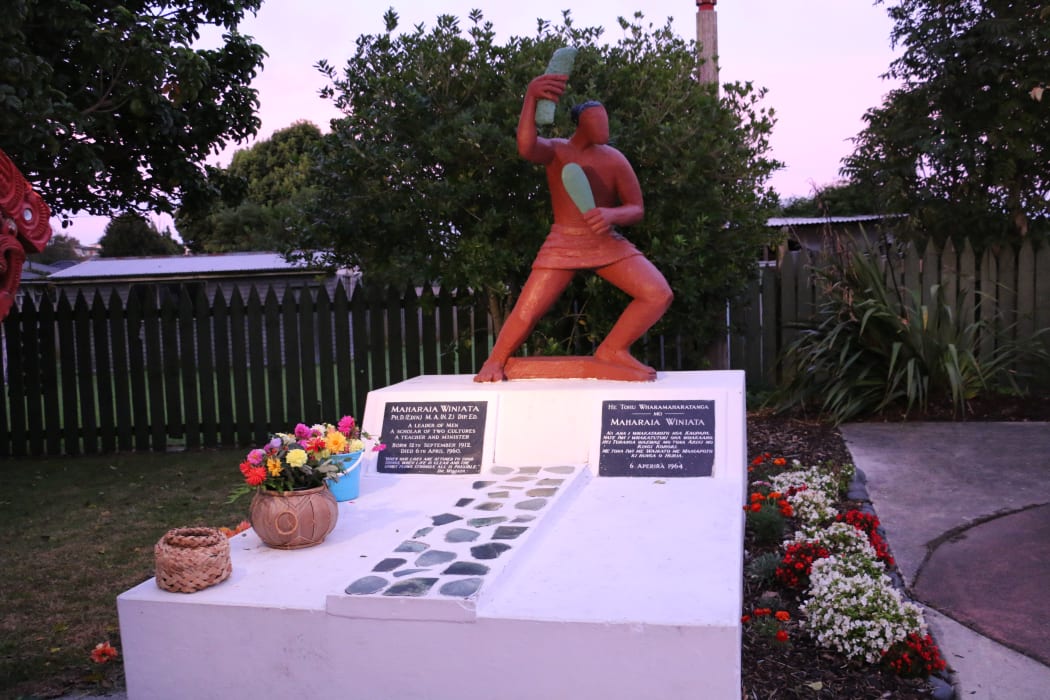
The Arnold Wilson sculpture that sits atop Maharaia Winiata's grave at Huria Marae. Photo: RNZ/Justine Murray
Hosting with Pride
Maora Reed is kept busy these days spending time with her mokopuna and attending functions at the local primary school and college.
In the 1960s, Poukai was a very important part of the year, according to Maora who worked as a waitress in the dining hall.
She says presentation was key and all the girls had to wear a white smock. Flowers were in abundance and families were assigned certain tables to dress, serve and look after the utensils.
“Our mothers had gardens, flower gardens. In fact, they used to have competitions about that - not just for the women, but for the men and far as looking after their gardens. Everybody took flowers down, buckets of them, boxes of them. Why? To decorate the tables.”
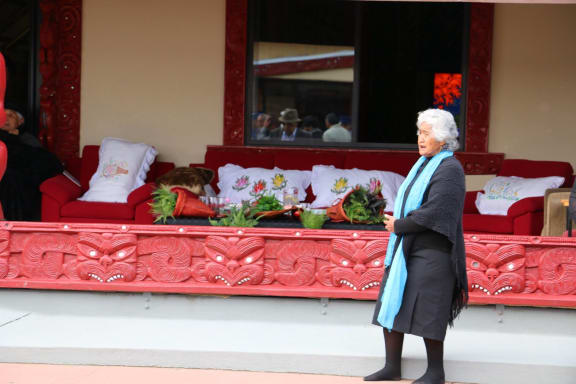
Kingi Tuheitia is welcomed onto Huria Marae. Photo: RNZ/Justine Murray
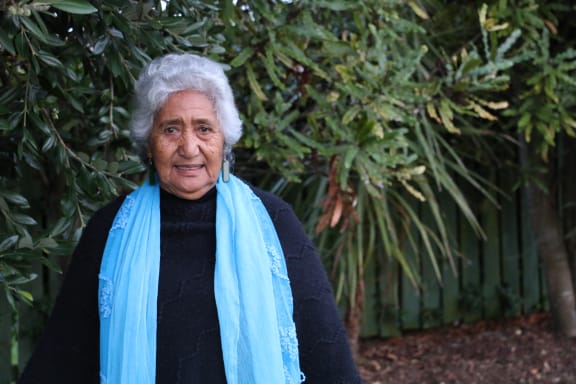
Maora Ngatoko-Rahipere says one of her main roles at Poukai was to waitress in the dining hall. Photo: RNZ/Justine Murray
Maureen Togo was one of the first to sit outside the dining hall collecting koha – receiving donations is a Poukai tradition. She sat there along with her sister Hape, but when she died a few years ago, Maureen left her post and handed the tradition over to her niece and stepdaughter.
Maureen has attended every Poukai at Huria Marae and says that over time she has seen lots of changes.
“Back to the '60s and '70s it was really hard times… We had to fundraise. Everyone had gardens here, and that’s how we got on. As soon as we know that the Poukai is coming here, away we go to fundraise - [host] dances, jumble sales, anything to make money to help the Poukai.”
Food fit for a king
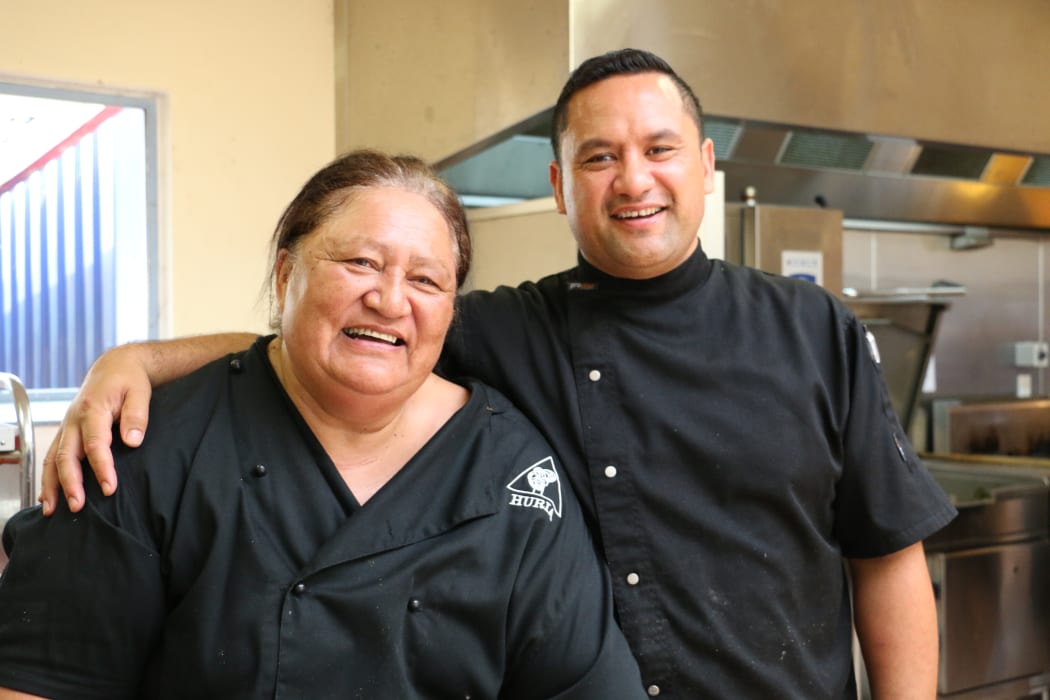
Charlie Rahiri and Janet Wilson run the kitchen during Poukai. Photo: RNZ/Justine Murray
Charlie Rahiri is the head cook in the kitchen alongside Janet Wilson. They are a tag-team of sorts, helping to balance the catering needs. Everything is timed down to the minute.
As well as strengthening kingitanga ties and discussing political news of the day, the king’s visit is largely about the food. When it’s time to plate up, it is organised chaos.
This is the tenth year that Charlie has been the ‘main person’ at the back, but he shrugs off this role.
“I’m the logistics manager, which means I get told what to do by the operations manager,” he laughs.
In the time since he has been out the back there have been a few changes on the menu – healthier options are on the tables and grape juice and water have replaced the plethora of plastic bottles of fizzy drink.
“The hardest thing is changing, like the change for some of the older ones... When we first did it in 2007 we took a few things off the menu. The biggest thing is we switched how everything was served so the unhealthy food became the options and the healthy became the main, changing the way we did it. We changed the king's menu as well, so he has a separate menu today.”

